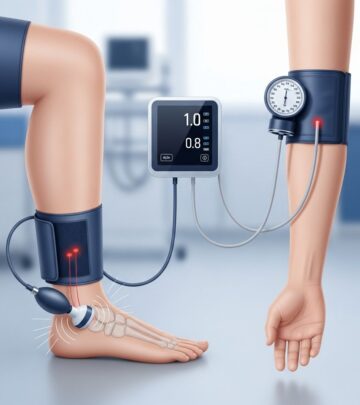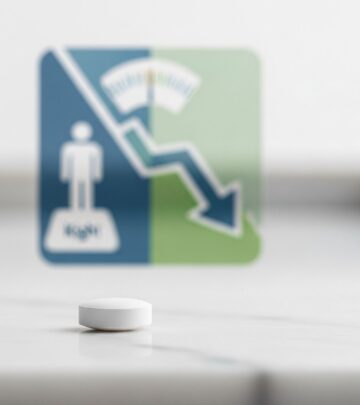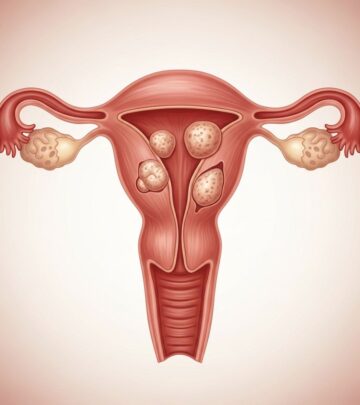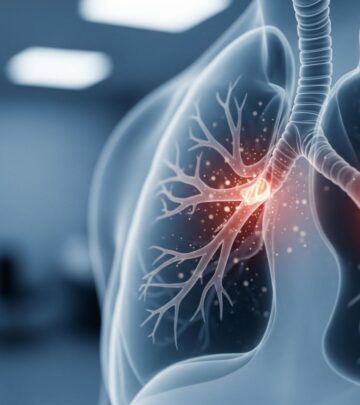Recognizing Sexually Transmitted Disease (STD) Symptoms
Understand the symptoms of sexually transmitted diseases, when to seek help, and why early detection matters for your health.

Sexually Transmitted Disease (STD) Symptoms
Sexually transmitted diseases, also known as sexually transmitted infections (STIs) or venereal diseases, are infections primarily spread by sexual contact. They are caused by various agents, including bacteria, viruses, and parasites. Anyone who engages in sexual activity, including genital touching or intercourse, is at risk of contracting an STI. Because STIs can lead to serious health complications, recognizing symptoms and seeking timely medical care is essential for your well-being and for preventing the spread to others.
Overview: What Are Sexually Transmitted Diseases (STDs)?
STDs are infections transmitted mainly through sexual contact via blood, semen, vaginal fluids, or other bodily fluids. In some cases, STIs can be spread without sexual intercourse, such as from mother to infant during pregnancy or childbirth, or through blood transfusions and shared needles. Many people with an STI show no symptoms or only mild symptoms, which means they may unknowingly transmit infections to others. Regular testing and open communication with partners are crucial in reducing risk and ensuring prompt treatment.
- Bacterial STDs: Caused by bacteria (e.g., chlamydia, gonorrhea)
- Viral STDs: Caused by viruses (e.g., HIV, herpes, HPV)
- Parasitic STDs: Caused by parasites (e.g., trichomoniasis)
Although some sexually transmitted diseases are easy to treat, others can be complex and may lead to long-term health problems if left unmanaged, such as infertility, organ damage, or even certain cancers.
Common Symptoms of Sexually Transmitted Diseases
STDs can present a broad spectrum of symptoms, and many infections remain asymptomatic—showing no obvious signs. Typical symptoms, when they do occur, might appear within days, weeks, or even years after exposure. For this reason, regular screening is recommended for sexually active individuals, especially when changing partners.
- Sores or bumps on the genitals, oral, or rectal areas
- Painful or burning urination
- Unusual discharge from the penis or vagina
- Unusual vaginal bleeding
- Pain during sexual intercourse
- Sore, swollen lymph nodes—often in the groin
- Lower abdominal pain
- Fever
- Rash—on the trunk, hands, or feet
Individuals may also experience flu-like symptoms during initial episodes, including headache, muscle aches, and fever. Remember, the absence of symptoms does not guarantee the absence of infection, making regular testing vital.
Symptoms of Specific Sexually Transmitted Diseases
Chlamydia Symptoms
Chlamydia is a bacterial infection of the genital tract. It is one of the most prevalent STDs, often causing few or no symptoms early on. If symptoms do emerge, they typically appear 5 to 14 days after exposure and are frequently mild. Early detection and treatment are important to prevent complications.
- Painful or burning urination
- Pain in the lower abdomen (pelvic pain)
- Lower back pain
- Fever
- Unusual vaginal discharge
- Discharge from the penis
- Painful intercourse (vaginal pain during sex)
- Bleeding between periods
- Testicular pain or swelling
- Rectal pain, discharge, or bleeding
Chlamydia can also infect other parts of the body, such as the eyes (causing redness and irritation), throat (sometimes sore), or rectum. Without treatment, chlamydia can produce serious health risks, including infertility.
Gonorrhea Symptoms
Gonorrhea is another bacterial infection of the genital tract. Symptoms in women generally appear 10 days post-exposure, while men may develop signs as soon as 5 days after being infected. Like chlamydia, gonorrhea can sometimes be present without symptoms or have only mild signs.
- Thick, cloudy, or bloody discharge from the penis or vagina
- Pain or burning during urination
- Heavy menstrual bleeding or bleeding between periods
- Painful, swollen testicles
- Painful bowel movements
- Pelvic or lower abdominal pain
- Anal itching, soreness, or discharge
Additionally, gonorrhea can affect the mouth, throat, eyes, or joints. Symptoms outside the genital area include:
- Eye pain, discharge, sensitivity to light
- Sore throat or swollen neck glands
- Warmth, swelling, or pain in joints (e.g., knees)
If left untreated, gonorrhea can lead to significant and lasting health complications, such as pelvic inflammatory disease (PID) in women or infertility in both men and women.
Trichomoniasis Symptoms
Trichomoniasis is a common sexually transmitted infection caused by the parasite Trichomonas vaginalis. Symptoms may be mild or severe and generally appear 5 to 28 days after exposure. This infection often affects the vagina, vulva, cervix, or urethra but can also infect men.
- Clear, white, greenish, or yellowish vaginal discharge
- Discharge from the penis
- Strong, fishy-smelling vaginal odor
- Vaginal or penile itching, burning, soreness, or irritation
- Pain during sex
- Painful urination
- Occasionally, lower abdominal pain
Many people with trichomoniasis—especially men—do not experience noticeable symptoms, allowing the infection to persist if undetected and untreated.
Why Early Detection Matters
Some STDs cause no symptoms for an extended time, increasing the risk of unknowingly spreading them to sexual partners. Untreated infections can result in serious consequences such as infertility, chronic pain, pregnancy complications, and a higher susceptibility to other STDs, including HIV. Early diagnosis and treatment are crucial for breaking the cycle of transmission and protecting reproductive health.
- Infertility: Chlamydia and gonorrhea can cause scarring and blockage of reproductive organs if left untreated.
- Organ damage: Untreated infections may harm other organs, such as the heart, eyes, or liver.
- Increased cancer risk: Some STIs can raise the risk of certain cancers (e.g., human papillomavirus with cervical cancer).
When to See a Doctor
Consult a healthcare provider promptly if you experience any signs or symptoms of an STD, especially if you are sexually active or suspect recent exposure. Even in the absence of symptoms, regular checkups and screenings are important for anyone who:
- Has new or multiple sexual partners
- Is considering starting sexual activity
- Is under age 21 and sexually active
- Wants peace of mind after a partner’s diagnosis
Early consultation and testing can help prevent complications and halt transmission.
How STDs Spread
- Sexual intercourse: Vaginal, anal, or oral sex with an infected partner
- Genital touching: Contact with infected skin or mucous membranes
- Mother to child: During pregnancy or childbirth
- Blood exposure: Through blood transfusions or shared needles (rare but possible)
Because some infections do not cause visible or immediate symptoms, an individual can appear healthy and still be contagious. This underscores the importance of awareness and regular screening for sexually active individuals.
Prevention Strategies
- Use condoms consistently and correctly
- Limit number of sexual partners
- Be open with partners about sexual health and history
- Regular screening, especially if you have new partners or are at higher risk
- Prompt treatment if you or your partner are diagnosed
Open communication and responsible sexual practices greatly reduce the risk of acquiring or spreading sexually transmitted infections.
Key Differences Among STD Symptoms: Reference Table
| STD | Onset of Symptoms | Common Symptoms | Possible Complications if Untreated |
|---|---|---|---|
| Chlamydia | 5-14 days after exposure | Burning during urination, vaginal/penile discharge, lower abdominal pain, testicular pain | Infertility, PID, chronic pelvic pain |
| Gonorrhea | 5-10 days after exposure | Thick or bloody discharge, pain during urination, pelvic pain, anal itching | Infertility, PID, systemic infection |
| Trichomoniasis | 5-28 days after exposure | Vaginal/penile discharge, fishy odor, vaginal/penile itching, painful urination | Increased risk of other STIs, pregnancy complications |
Frequently Asked Questions (FAQs)
Q: Can I have an STD without any symptoms?
A: Yes, many STDs can be present without causing noticeable symptoms. This is why routine testing is essential, as untreated infections can still lead to complications and be passed to others.
Q: How soon after exposure might symptoms appear?
A: Symptoms can develop within days, weeks, or even years, depending on the infection. However, some people never show symptoms. For instance, chlamydia symptoms may start 5-14 days after exposure, while gonorrhea symptoms may manifest in as few as 5 days.
Q: Do all STDs cause similar symptoms?
A: No. Each STD may have distinct symptoms. For example, chlamydia and gonorrhea often cause pain during urination and discharge, while trichomoniasis may lead to a strong vaginal odor and itching. Still, many STDs overlap in their manifestations.
Q: When should I seek medical attention?
A: Seek prompt medical care if you have any symptoms of an STD, think you have been exposed, or if your partner is diagnosed with an STD. Even without symptoms, regular testing is prudent if you are sexually active.
Q: Can STDs affect other parts of my body?
A: Yes, some STDs can infect areas other than the genitals, such as the mouth, throat, eyes, joints, or rectum. For example, gonorrhea and chlamydia can both infect the eyes and rectum, causing irritation, pain, or discharge.
Q: How are STDs diagnosed?
A: Diagnosis commonly involves laboratory tests of blood, urine, or fluid samples from affected sites. Your healthcare provider may recommend a tailored set of tests based on your symptoms and risk profile.
Q: What steps can I take to protect myself?
A: Use condoms consistently, reduce the number of sexual partners, communicate openly with your partner, and get regular screenings. Early treatment is also crucial to avoid complications.
Disclaimer: This article is for informational purposes only and is not a substitute for professional medical advice, diagnosis, or treatment. Always consult a qualified healthcare provider with questions about STDs or any medical condition.
Read full bio of medha deb












